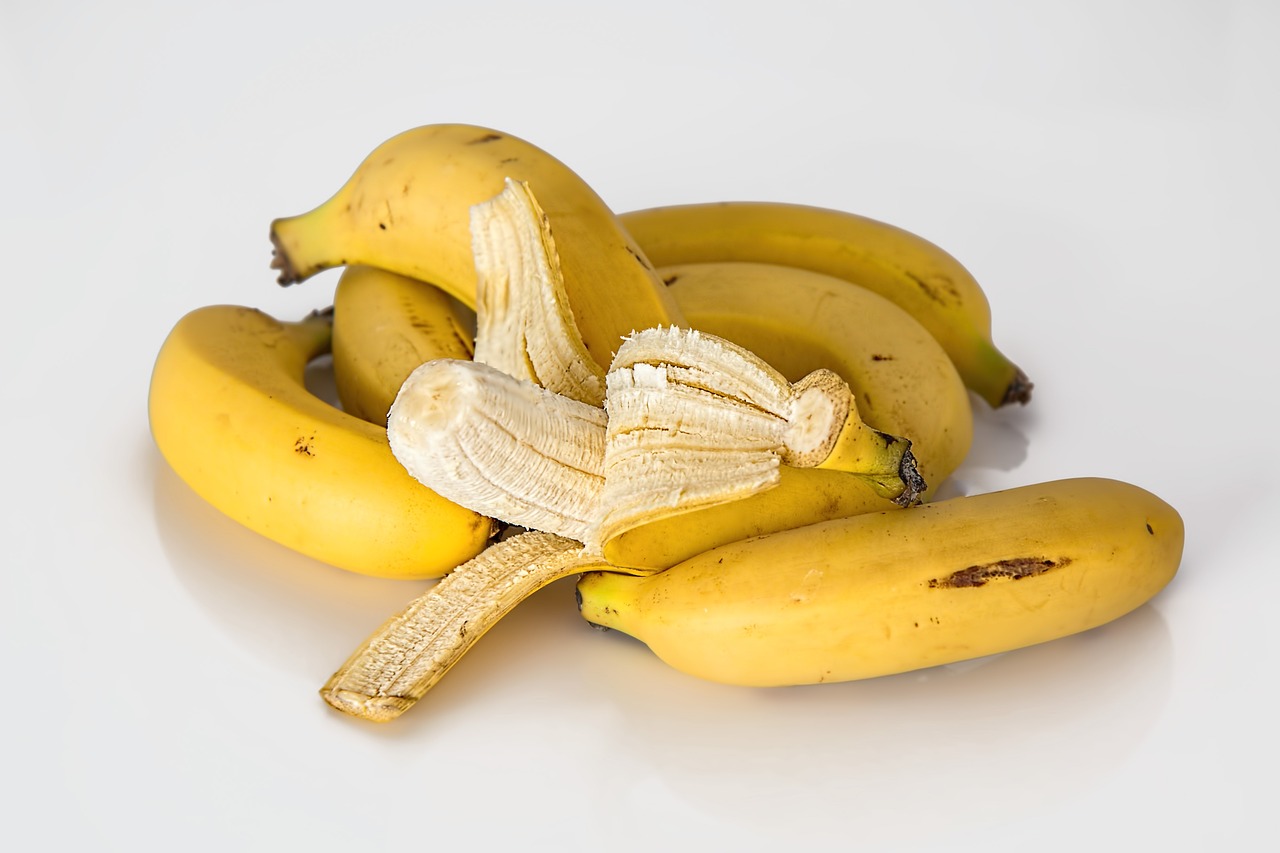Cavendish Banana Peel Extract's Antibacterial Activities Potential as Disinfectant

Downloads
Highlights:
1. The COVID-19 pandemic makes personal hygiene more important than ever, and antibacterial substances such as disinfectants are crucial in maintaining said hygiene.
2. The MBC of cavendish banana peel extract against the growth of bacteria Escherichia coli and Staphylococcus aureus was 25%, with no activity against Bacillus subtilis.
3. Musa acuminata peel extract has the potential to be used as a disinfectant.
Abstract
Introduction: The COVID-19 pandemic makes personal hygiene more important than ever, and antibacterial substances such as disinfectants are crucial in maintaining said hygiene. This study aimed to determine the minimum inhibitory concentration (MIC) and the minimum bactericidal concentration (MBC) of cavendish banana peel extract (Musa acuminata) against Staphylococcus aureus, Escherichia coli, and Bacillus subtilis.
Methods: The design of this study was a laboratory experiment that used the broth dilution method with test tubes using methanol as the extract's solvent. Sterile aquadest was used as the solvent, and Mueller-Hinton broth was used as the growth medium in tubes. All samples of the bacteria (Staphylococcus aureus, Escherichia coli, and Bacillus subtilis) were provided by the Laboratory of Microbiology Faculty of Medicine, Universitas Airlangga.
Results: MBC was the only parameter found due to the color and particulates, which hindered the turbidity assessment of MIC. From the dilution test, the MBC of cavendish banana peel extract against the growth of bacteria Escherichia coli and Staphylococcus aureus was 25%, with no activity against Bacillus subtilis.
Conclusion: There were antibacterial activities of Musa acuminata peel extract against Staphylococcus aureus and Escherichia coli. Therefore, it has the potential to be used as a disinfectant.
Aboul-Enein, A., Salama, Z., Gaafar, A. et al (2016). Identification of phenolic compounds from banana peel (Musa paradaisica L.) as antioxidant and antimicrobial agents. Journal of Chemical and Pharmaceutical Research, 8(4), pp.46-55.
Baliga, M., Shivashankara, A., Venkatesh, S. et al (2019). Phytochemicals in the Prevention of Ethanol-Induced Hepatotoxicity. Dietary Interventions in Liver Disease, pp.79-89.
Behiry, S., Okla, M., Alamri, S. (2019). Antifungal and Antibacterial Activities of Wood Treated with Musa paradisiaca L. Peel Extract: HPLC Analysis of Phenolic and Flavonoid Contents. Processes, 7(4), p.215.
Cheng, L. and Hu, Q. (2015). Antibacterial Activities and Mechanism of Action of Acetone Extracts from Rabdosia rubescens. Aceh International Journal of Science and Technology, 4(1), pp.1-6.
CLSI (2015). Methods for Dilution Antimicrobial Susceptibility Tests for Bacteria That Grow Aerobically; Approved Standard”Tenth Edition.
Ganeshpurkar, A. and Saluja, A. (2017). The Pharmacological Potential of Rutin. Saudi Pharmaceutical Journal, 25(2), pp.149-164.
Guimarí£es, A. C., Meireles, L. M., Lemos, M. F. (2019). Antibacterial Activity of Terpenes and Terpenoids Present in Essential Oils. Molecules, 24(13), 2471. doi:10.3390/molecules24132471.
Ighodaro, O. (2012). Evaluation study on Nigerian species of Musa paradisiaca Peels: Phytochemical screening, Proximate analysis, Mineral Composition and Antimicrobial Activities. Researcher, 4(8), pp.17-20.
Jain, P. (2011). Antibacterial and antioxidant activities of local seeded banana fruits. African Journal of Pharmacy and Pharmacology, 5(11), pp.1398-1403.
Joshee, N., Dhekney, S. and Parajuli, P. (2020). Therapeutic and Medicinal Uses of Terpenes. Nature Public Health Emergency Collection, pp.335-359.
Kahkeshani, N., Farzaei, F., Fotouhi, M., et al (2019). Pharmacological effects of gallic acid in health and diseases: A mechanistic review. Iranian Journal of Basic Medical Sciences, 22(3), pp.225-237.
Khawas, P., Das, A. and Deka, S. (2017). Banana Peels and their Prospects for Industrial Utilization. Food Processing By-Products and their Utilization, pp.195-206.
Mokbel, M. and Hashinaga, F. (2005). Antibacterial and Antioxidant Activities of Banana (Musa, AAA cv. Cavendish) Fruits Peel. American Journal of Biochemistry and Biotechnology, 1(3), pp.125-131.
Parashar, S., Sharma, H. and Garg, M. (2014). Antimicrobial and Antioxidant activities of fruits and vegetable peels: A review. Journal of Pharmacognosy and Phytochemistry, 3(1), pp.160-164.
Prakash, B., Sumangala. C.H., Melappa, G. et al (2017). Evaluation of Antifungal activity of Banana peel against Scalp Fungi. Materials Today: Proceedings, 4(11), pp.11977-11983.
Rao, L., Zhao, F., Wang, Y., et al (2016). Investigating the Inactivation Mechanism of Bacillus subtilis Spores by High Pressure CO2. Food Microbiology.
Rutala, W. and Weber, D. (2013). Disinfection and sterilization: An overview. American Journal of Infection Control, 41(5), pp. 52-55.
Salehi, B., Fokou, P., Sharifi-Rad, M. (2019). The Therapeutic Potential of Naringenin: A Review of Clinical Trials. Pharmaceuticals, 12(1), p.11.
Semwal, D., Semwal, R., Combrinck, S. et al (2016). Myricetin: A Dietary Molecule with Diverse Biological Activities. Nutrients, 8(2), p.90
Souza, S., Monache, F. and Smí¢nia, A. (2005). Antibacterial Activity of Coumarins. Zeitschrift für Naturforschung C, 60(9-10), pp.693-700.
Vuolo, M., Lima, V. and Junior, M. (2019). Chapter 2 - Phenolic Compounds: Structure, Classification, and Antioxidant Power. Bioactive Compounds, pp.33-50.
Wang, S., Yao, J., Zhou, B., et al. (2017). Bacteriostatic Effect of Quercetin as an Antibiotic Alternative In Vivo and Its Antibacterial Mechanism In Vitro. Journal of Food Protection, 81(1), pp.68-78.
Yaacob, S., Wahab, R., Huyop, F., et al (2020). Morphological alterations in gram-positive and gram-negative bacteria exposed to minimal inhibitory and bactericidal concentration of raw Malaysian stingless bee honey. Biotechnology and Biotechnological Equipment, 34(1).
Copyright (c) 2023 Erlangga Lazuardi Ramadhan, Wiwin Retnowati, Linda Dewanti, Manik Retno Wahyunitisari

This work is licensed under a Creative Commons Attribution-ShareAlike 4.0 International License.
1. The journal allows the author to hold the copyright of the article without restrictions.
2. The journal allows the author(s) to retain publishing rights without restrictions
3. The formal legal aspect of journal publication accessibility refers to Creative Commons Atribution-Share Alike 4.0 (CC BY-SA).




























